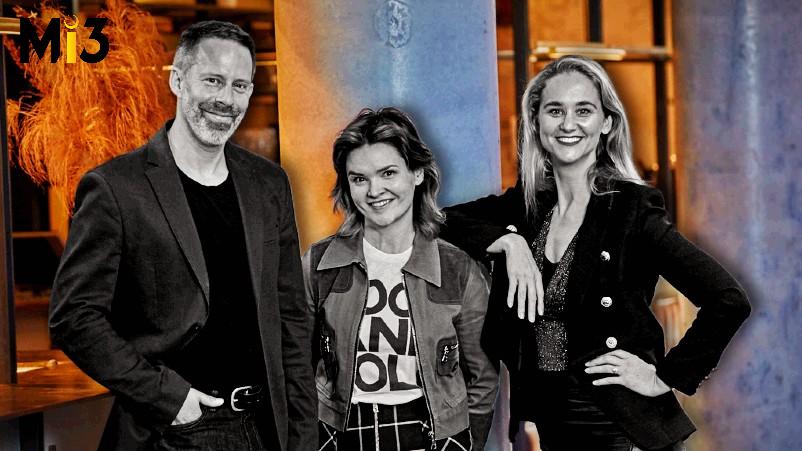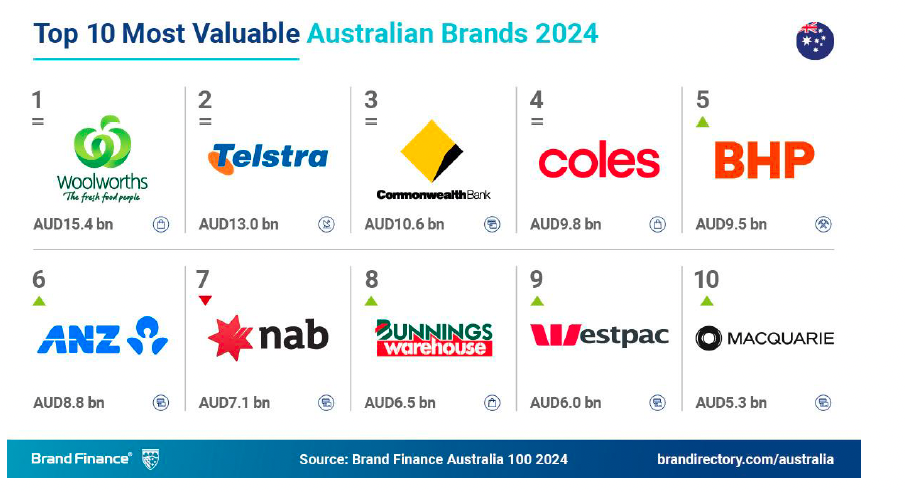‘Nobody should be doing surveys, let alone synthesising surveys’: Heatseeker co-founders tout 95 per cent predictive confidence with synthetic customer avatars, score ServiceNow contracts

What you need to know:
- Flush with US$1.5m in preseed funding, Aussie intelligence platform startup Heatseeker, is looking to disrupt the US$110bn market research industry using large-scale experimentation with advanced AI and synthetic person avatars.
- The three-year-old business already boasts several ASX-listed and Fortune 500 companies as clients, including ServiceNow, Medibank and Tyro.
- Having initially set its sights on marketers and helping them de-risk their specific program pain points new campaign or testing a unique value proposition with consumers – co-founder Kate O’Keeffe says the startup is now finding businesses using the avatars as a real-time way to regularly interact with the customer segments they represent thanks to the real-world data collected through the experimentation engine. She cites some client employees engaging with the avatars 30 or 40 times a day as a way of supporting everyday business decision making.
- In a display at this year’s SXSW Sydney, the customer avatar technology was on display via a joint experimentation project conducted in partnership with KPMG. Heatseeker gathered insights from 250 experiments across 60 audience segments in NSW and Victoria, reaching 250,000 people via social channels in 120 hours.
Amazon’s empty chair in the boardroom to represent the voice of customer, eBay’s talking stick in every executive meeting, and all those customer surveys you’ve conducted, can be relegated to the past, reckon the bullish founders behind Australian customer intelligence platform startup, Heatseeker.
Buoyed by US$1.5 million in pre-seed funding, and a swelling list of ASX-listed and Fortune 500 clients, Heatseeker has its sights set on disrupting the US$110 billion market research industry and nothing less than derisking organisational decision-making by bringing real-world customer insights – and importantly, the ability to interact with them via digital avatars – into day-to-day business discussions.
The platform is built around providing AI-powered, real-time insights by using experiments to gather consumer behaviour. Heatseeker takes an experimentation brief from a brand on a particular growth question – a new value proposition, product offer or campaign, for example – then conducts real-time experiments via social channels to gauge how consumers feel about it, crafting test ads, campaigns and messaging using AI for the task. It targets down to the levels of audience targeting offered across Facebook, Instagram and LinkedIn available to advertisers, capturing real-time behavioural signals to identify sentiment around what’s being put forward and collect the data needed for insights.
The breakthrough next step is that Heatseeker then takes the data and creates ‘synthetic personas’ – data-trained avatars users can interact with by simply speaking to the customer cohort represented by the digital manifestation. The average experiment takes between four and eight days to run, and Heatseeker’s recommending four to eight experiments to accrue sufficient data to drive the avatars. Clients can run them in sequence, meaning avatars can be launched within a couple of weeks.
“We do use synthetics, but they’re trained on the highest quality, real-world and real-time data,” says O’Keeffe. “What we found is when we have the highest quality data available, we’re able to synthesise answers to within 80 to 90 per cent correlating to real-world answers.”
Heatseeker is officially quoting 95 per cent predictive confidence off the back of what it’s doing. Plenty who are buying into its methods, including latest backers San Francisco-based Capital F, Euphemia, Even Capital and East End Ventures.
It already counts a number of Fortune 500 and ASX-100 listed companies as clients, with Medibank and Tyro two local examples of brands on-board. Its largest global company, meanwhile, is B2B tech player, ServiceNow. In fact, ServiceNow CMO, Colin Fleming, told Mi3 in July that the company now uses these digital twins of key personas to test messaging pre-launch, dramatically speeding up feedback loops and derisking campaign rollouts.
We’re looking to replace panels of people chasing gift cards, or half a dozen people eating stale cheese sandwiches in a meetings. We think all of that is really problematic. Because there is a real difference between what people say and what they do.
Seekers behind the tech
Heatseeker was co-founded in 2023 by CEO, Kate O’Keeffe, who founded the Cisco Hyperinnovation Living Labs innovation program; COO, Fiona Triaca, who ran her own brand innovation strategic consultancy; and CPO Rutger Coolen, former head of product for Atlassian. The company also counts former Uber, eBay CMO, Steve Brennan, as chief evangelist, whose scale-up investment company, Archie, has invested in Heatseeker.
“We’re looking to replace panels of people chasing gift cards, or half a dozen people eating stale cheese sandwiches in a meetings,” O’Keeffe says. “We think all of that is really problematic. Because there is a real difference between what people say and what they do.”
Synethetic personas for research have been getting plenty of airtime globally. Founders of early pioneering company, Evidenza Jon Lombardo and Peter Weinberg told Mi3 their new piece of “synthetic customer” tech creates virtual customers on demand – and is 95 per cent identical to the real thing. Snake oil you ask? That’s what EY thought, and Salesforce, and Mars. Now they are all buying in – not to mention investor, Mark Ritson.
Heatseeker’s founders reckon their approach is even more robust. They claim by doing bespoke, real-world experiments as the foundation for any personas they make, they’re ensuring data is unique to each client. There’s an ongoing sales opportunity with it of course – the team is recommending experiments every month to “top up” and keep live data flowing into customer avatars so as to ensure they stay on top of any potential changing consumer sentiment. Heatseeker does also “listen to the rivers of data available from the business” and can input this into the mix if a client wants it.
“Because it’s behavioural and not a survey, we remove that lack of correlation between real-world and survey-based. Evidenza is survey-based, so people want to know what the correlation is to the survey,” O’Keeffe says in response to a question on why Heatseeker is different to Evidenza.
“The answers these personas give are statistically significant data behind decisions. So it’s not the qualitative opinion of my persona, it is the statistically significant opinion of your market,” adds Coolen.
O’Keeffe’s tentpole statement? “I don’t think anyone should be doing surveys let alone synthesising surveys. So this is really different. Prove to me what the correlation is to the real-world behaviour, then we can have a real conversation. But to your point, every time our customers run a real-world experiment, they can see what the synthetic correlation would have been. So every time they run something in the real world, they can see how correlated they are.”
This changes the paradigm about the information we're taking in as a business and what we're doing with it from an outcomes perspective.
KPMG’s household customer avatars
During last week’s SXSW Sydney, Heatseeker’s synthetic customer avatar platform was live at the KPMG Australia Futuresphere space. The two companies ran 25 behavioural experiments across 60 audience segments in NSW and Victoria, reaching 250,000 people via social channels in 120 hours. The platform captured millions of behavioural signals and insights by asking and seeking out pain points, jobs to be done, buying drivers and different language prompts – such as affordability, or financial security. It then turned those into 12,000 insights across the energy, telco, financial services and retail categories.
These were then clustered into four customer avatars: Liam, the home steward (financial services), Ben, the green pragmatist (energy), Chloe, the connected mover (telco) and Sarah, the household hero (retail). Visitors to the showcase could interact via speech in real time with all four avatars, asking them questions around things like why they switch brands, what value looks like to them in each category, and other preferences within the frame of the training data.
Heatseeker also claims the avatars can’t hallucinate because of the specific data they’re trained on – the KPMG demonstration showed Ben the pragmatist wouldn’t answer a question on who might win a world cup sporting event.
KPMG Australia partner for creates, customer and operations, Sudeep Gohil, says the consulting giant has been working with Heatseeker for a year, first backing it through the KPMG Futures program and now taking it into existing clients.
“We had a lot of clients through and they have looked at it going ‘Wow, this is A, something we have not seen before, B, is incredibly useful, and C, actually works compared to the smoke and mirrors stuff you see around,” he tells Mi3. One marketer reportedly running 60 markets globally saw the tech, immediately pitched the platform internally for one country, and is going live in two weeks.
Gohil says one of the reasons KPMG is really interested in this is because it “changes the paradigm about the information we’re taking in as a business and what we’re doing with it from an outcomes perspective”. That comes back to how much reliance and trust we place in the data and methods we’re using to understand customers, he says.
Beyond marketers
O’Keeffe initially expected clients would come with a specific growth or execution problem, such as a campaign launch, then run four to six experiments to validate content and derisk their efforts.
“Right now, what we’re seeing is the opposite. People are coming to us saying, I want my synthetics working within two weeks, as I want to be able to offer my entire business the ability to chat and interrogate these personas in real time,” she says. “They’re doing it not just to be helpful, they’re doing it because it means the customer is at the centre of what they’re doing. They’re far less likely to make mistakes. They don’t have to pitch each other or argue anymore.
“So there are two big changes here: Firstly, where we get our information from, which is experiments and not surveys and being able to replicate those answers synthetically… Rather than a survey that runs once or twice a year, people are talking to Ben 30, 40 or 50 times per day. And not just 1-2 people, but hundreds of people in the companies, asking what the web copy should be, what offer will make more sense to Ben, and if they’re explaining it right. This personification is really changing the behaviour.”
The team also expected more FMCG clients, but bringing on ServiceNow shows how the platform can fill a gap in the B2B market, continues O’Keeffe. “You can’t have 1,000 chief security officers in Japan available to answer a survey. But we can run experiments live on LinkedIn, which gives us access to the insights from the B2B world,” she says.
Grocery, mealkit and beauty are also strong categories showing interest, and Heatseeker is one of 10 finalist in L’Oreal’s Beauty tech open innovation competition for startups.
O’Keeffe claims it’s not affordability of the platform that’s a potential roadblock, noting “we’re really lucky that we’re competing against a lot of ways of getting this information that are both incredibly expensive and incredibly inaccurate,” she says. “Comparing us to surveys isn’t helpful anymore.”
Of course, there’s a lot riding on the briefing process here for experiments – and marketing has a less-than-optimal reputation for briefing. As well as their report into the fact the briefing process is broken, BetterBriefs this year posted fresh insights that argued the creative ideation-evaluation process is also busted.
O’Keeffe has an answer for this too: “We can help companies shape and inform the experimentation briefs based on our insights on what’s working best,” she says.
430,000 customers in the boardroom
Referencing his own tenure as a marketing chief, Brennen points to the scenario of marketers holding strategy days as a use-case for how Heatseeker’s technology could reshape the way businesses understand the customer.
“You’ll do a strategy day in order to do the next six months’ planning, and bring six customers in who sit on six stools as representative of customers from your segment. As a marketer, you’ll encourage your executives and teams to chat to those customers. Depending on who they chose, how polite that person is and how real and honest they are, everyone can end up basing their whole point of view on customers on that person. Your senior leaders have just taken one person’s point of view and they now think you can build strategy around that. How about bringing in avatars that represent 430,000 into the room and saying, let’s have that chat with the customer?
“Marketers are bringing this [Heatseeker] into the room, for sure. But what we’re also seeing is that the whole c-suite are realising we can now all talk to customers real time – it doesn’t sit in a PowerPoint repository, or in some weird ChatGPT thing they’ve built.”
Brennen notes it wasn’t that long ago Amazon was famous for having a chair in the room to represent the customer at every board room or meeting. At eBay, it was a talking stick that represented the voice of customer.
“Technology has moved leaps and bounds, and everyone can have an understanding of customer. That’s a beautiful thing. No longer should a decision be made because of what you read in a PowerPoint survey that might be two years old,” he adds.





